The Younger Dryas was a climactic event that occurred around 10,900 to 9700 BC and was characterized by rapid global warming and polar ice melt followed by a subsequent refreezing. We had been slowly coming out of an ice age, and then, for about 1,200 years, we plunged back into it. The exact causes of it are a point of contention among scientists. It was most likely either a meteor impact on the North American icecap or solar flairs. Sea levels are believed to have risen as much as 130 meters during this time. This is how the world likely looked prior to the Younger Dryas.
 As you can see, the Japanese islands, Java, Sumatra and Borneo are all connected to mainland Asia. Australia is connected to New Guinea. The Iberian Peninsula is connected to Africa, making the Mediterranean an inland lake. The Red Sea and the Persian Gulf don’t exist. Sri Lanka is connected to the mainland. The British isles are connected to mainland Europe. The Bering Strait is gone, connecting North America and Asia. And all coastlines are generally extended a hundred miles or so out to sea.
As you can see, the Japanese islands, Java, Sumatra and Borneo are all connected to mainland Asia. Australia is connected to New Guinea. The Iberian Peninsula is connected to Africa, making the Mediterranean an inland lake. The Red Sea and the Persian Gulf don’t exist. Sri Lanka is connected to the mainland. The British isles are connected to mainland Europe. The Bering Strait is gone, connecting North America and Asia. And all coastlines are generally extended a hundred miles or so out to sea.
None of this is controversial. It’s been mainstream science for a long time. What is controversial how quickly the sea levels rose, and discussing what human civilization may have looked like before this period.
According to mainstream archeology, people were primitive hunter-gatherers, and any heretic who dares question that paradigm is a ‘pseudoscientist.’ Unfortunately for them, the evidence to the contrary is becoming overwhelming.
A growing number of scientists now believe that this sea rise happened not gradually over centuries, as previously thought, but in just a day or two. In a separate article in the near future, I will go over the evidence for this.
Think about what would happen to our current civilization if that happened today. Currently, 40% of the world’s population lives within 100 kilometers (63 miles) of the coast according to a UN study. All major coastal cities would be destroyed by tsunamis. All power grids would be shut off. Most remaining people would starve to death in the unspeakable famines that would occur during the collapse of agriculture due to the subsequent nuclear winter. In short, it would be a total reset button for human civilization.
This also coincided with the mass extinction of an untold number of species like the mammoth and the saber-toothed tiger, although, according to mainstream science, this was because of human activity. (Again, more information to come in a future article.)
And now ask yourself, what would be left of our civilization 12,000 years from now if this were to happen? Maybe Mt. Rushmore? Maybe some coins and other precious metals? Not much more comes to mind. Anything made of wood, concrete or most metals would be long-gone.
So, if you want to find any evidence of a past civilization, you have to look at stone structures. Luckily, our predecessors on this planet left us no shortage of those.
There are mysterious stone structures all over the world. One that I am particularly interested in is the Great Sphinx which contains water erosion that some geologists believe indicates that it is at least 10,000 years old. This can be seen in pictures. The head was obviously carved much later, and it is out of proportion, much smaller than it should be.

The pyramids are likely younger, but it is difficult to know for sure how old the pyramids of Giza are. They were built little mortar, so there is not much organic material to carbon date, and we can’t judge their age from erosion patterns, because, up until a couple thousand years ago, they were covered with a white limestone (some claim marble) outer shell, and what we see today was not always the outer layer exposed to the elements.
Conventional Egyptology tells us that the Great Pyramid was the tomb of the Pharaoh Khufu who reigned from 2589 to 2566 BC. The iron-clad evidence for this is this sideways, red graffiti in the upper chamber…
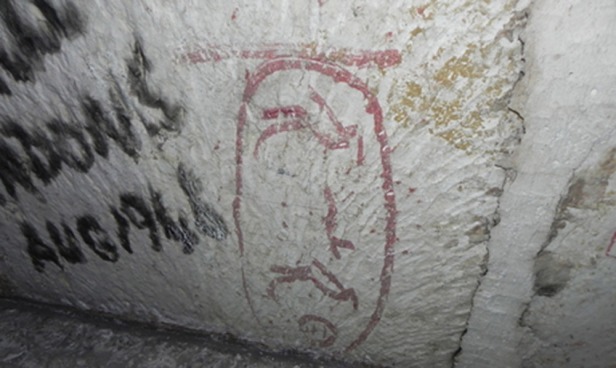
…And the fact that the so-called ‘kings’s chamber’ contains a part of a box than could have fit a sarcophagus. I’m not joking. That’s all the Egyptologists have to go on. This is the hill they’re willing to die on.
Radiocarbon dating was done on mortar in three different independent studies in the 1980s, and they came to three different results. They dated the mortar to 3809, 3101 and 2853 BC. So they range from about 1,300 to 300 years before the reign of Khufu. Oddly, the oldest dating came from the top of the pyramid, and the youngest came from the bottom, indicating that this could have been repair work. To be clear, radiocarbon dating is not 100% accurate.
Of course the Egyptologists didn’t like these finding, so they suppressed them. Then they commissioned their own dating in 1995, which, no surprise, dated the Pyramid to exactly the time of Khufu.
Most dynastic Egyptians tombs are in the Valley of the Kings and similar sites and are elaborately decorated.
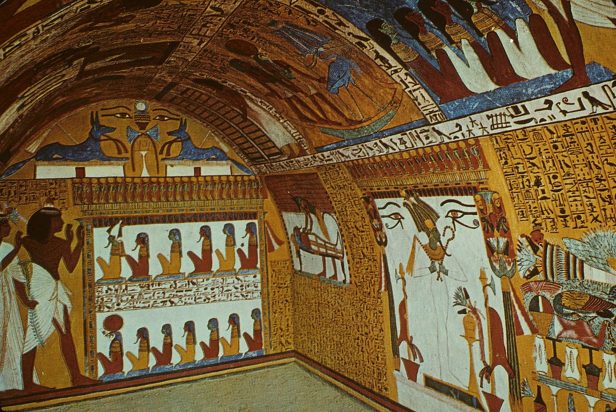
…compared to the King’s Chamber which has no artwork at all.
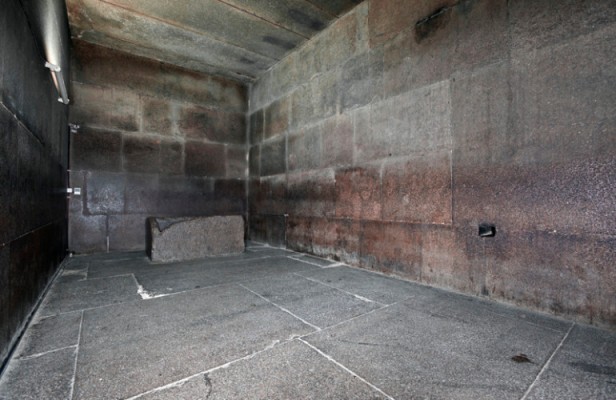
I’m not saying that this is definitive proof that the pyramid is pre-dynastic, only planting seeds.
Egypt is littered with thousands of pieces of dynastic hieroglyphics, many depicting people engaging in work and going about their daily tasks, yet there are no depictions of the building of the pyramids. The Great Pyramid is an astronomical enigma and has the dimensions of the planet built into it and would have taken centuries to build, but apparently, this culture, that wrote down nearly everything important, just couldn’t be bothered to record this monumental task.
There are some much older, pre-dynastic temples in Egypt like the Valley Temple (next to the Sphinx) and the Osireion Temple. These are both underground and contain little to no artwork.
Outside of Egypt, I think the most enigmatic collection of monolithic sites is in South America.
There are three styles of so-called ‘Incan’ stone architecture. The oldest is the most complex and sophisticated, while the youngest is the simplest. Indeed, some building sites contain all three, with the oldest at the bottom and youngest at the top. Mainstream archeology claims that this is because the Incas got lazy after a while.
The old style contains things like drill holes.

Weird doors to nowhere cut into the side of cliffs.
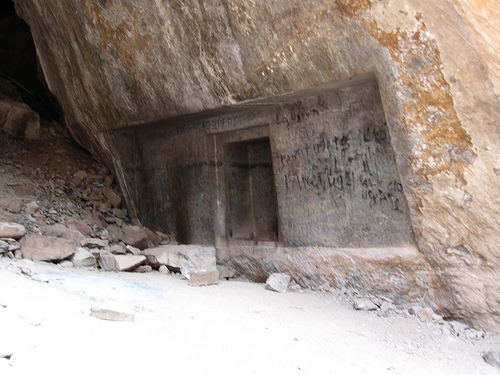
Perfect right angles and walls of perfectly cut and stacked rocks with no mortar.

Here is a good example of a wall in Cuzco that contains all three styles of building.

This wall was rebuilt over the years, probably due to earthquake damage. The old style is on the right side. The middle style is on the bottom left and seems to be a crude imitation of the old style. The later style is in the top left and is just uncut stones and mortar. This third style is the most common and, I believe, is true architecture from the Incan Empire, (1438-1533 AD) or possibly the early Spanish period, and that the previous two are pre-Incan. I believe the Incas and the Dynastic Egyptians built their empires on the ruins of older empires.
It should also be stated that the Incas and their Quechua descendants don’t normally claim to have built these monuments, but have their own myths that they were built by gods in prehistoric times.
Other sites that are rewriting history are Gunung Padang and Gobekli Tepe.
Gunung Padang is site in Indonesia that has been carbon dated to at least 25,000 years old. It is a megalithic site on top of what was previously believed to be a natural hill, but was recently discovered to be a buried, much older site. It is some kind of extremely ancient earthen pyramid, and, according to radar, there are at least three large chambers up to 100 feet underground.
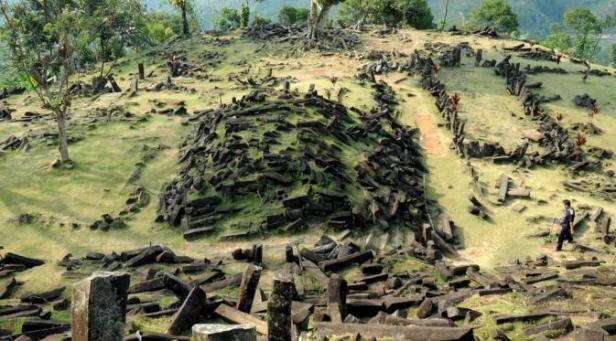
This is already a tourist site. The Indonesian authorities are dragging their feet on allowing excavations.
You’ll find that globally there is very little interest in investigating prehistoric sites like this. Establishment archeologists are scared for their paradigm to be flipped and all their achievements diminished. This is what would happen if they had to accept that human civilization is much older then they previously thought.
Gobekli Tepe in Turkey is what inspired me to write my very first article on this site (Skepticism and the Gobekli Tepe Debacle.) It is also a prehistoric buried site, of at least 12,000 years old.
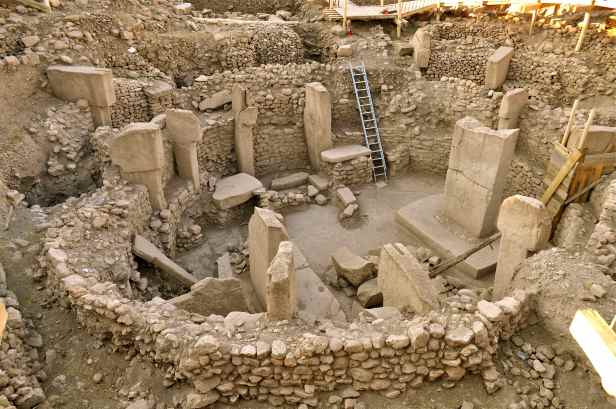
There is also no excavation currently going on at this site. Partly because it’s very close to the Syrian border, and Syria has it’s problems right now. But also because the archeologist who made it his life’s mission, Claus Schmidt, passed away a couple years ago, the Turkish government doesn’t care, and it scares the shit out of mainstream archeologists.
I think some of the questions raised by the ancient aliens crowd can be better answered by this hypothesis. Namely, the similarities between distant ancient cultures and the evidence for lost technology.
It’s likely that cultures on all continents were connected before the cataclysm, And their surviving ancestors past down certain traditions.
Like swastikas.

And pyramids.
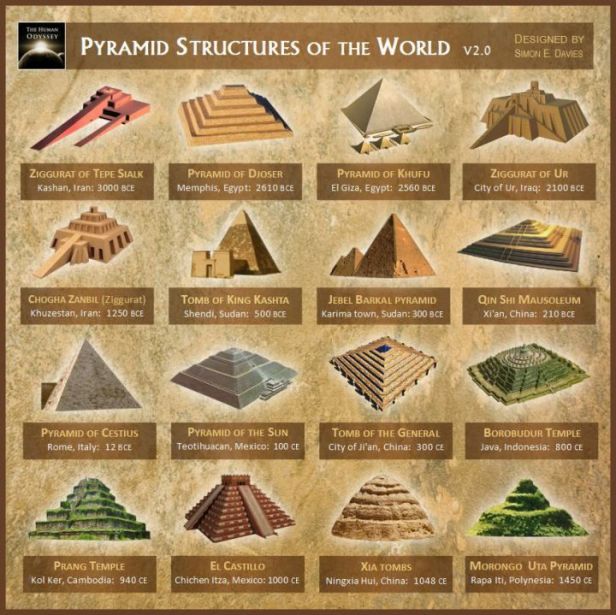
There are certain motifs that are common throughout the ancient world. I don’t think it’s because of ancient aliens. I think it’s because of a lost ancient civilization.
Cultures all over the world have ancient flood myths and many have stories of a past, high civilization that fell for grace.
But like in all human enterprises, we are met with systemic corruption. It is very difficult to get this information out, and it is very difficult to find any academics who are open-minded enough and committed enough to truth to consider the possibilities.
Possibly the most famous archeologist in the world is an Egyptian man named Zahi Hawass. He is one of the most vile human beings on the planet. Here are some direct quotes from him: “I don’t believe in radar,” when confronted with evidence of chambers under the sphinx and pyramids. “I don’t know anything about Gobekli Tepe,” when asked about Gobekli Tepe. He refuses to debate anyone, and he has been caught red-handed stealing and selling ancient artifacts. And this is the world’s go to expert for information on ancient Egypt. He’s been appointed to this position by the Egyptian government. What an appalling state of affairs. My dream is that he’ll die soon, and we will have some serious scholarship on Egypt in my lifetime.


Luckily there are some great alternative archeologist that are the main innovators in the field. Archeology is not really something that requires training. It’s just the compiling and interpretation of information. Anyone can do that nowadays, and the universities are losing their monopoly.
Two great YouTube channels I would recommend for anyone interested are Brien Foerster (especially for Inca architecture) and Ancient Architects for pretty much anything (but especially Egypt.) Alternative Egyptologists worth reading are John Anthony West, Robert Bauval and Robert Schoch. Graham Hancock is a journalist and researcher who ties much of this together.
I think this is a scary subject for some people (not just establishment archeologists). People want to believe that human progress moves forward, not backward. Most people think that, as soon as we evolved into our hairless, upright fully anatomically modern selves around 250,000 years ago, we have more or less made a steady advancement forward as a species with little to no setbacks, but this doesn’t appear to be the case. We can get set back, and it can come at any time. Our existence on this rock, spinning around this ball of fire, is quite precarious, and that’s not a comforting thought for anyone.
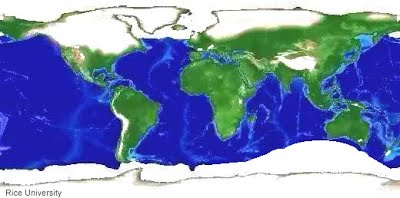
Hello. I have checked your wordpress.com and i see you’ve got some duplicate
content so probably it is the reason that you don’t
rank high in google. But you can fix this issue fast. There is a tool that generates content like human, just search in google:
miftolo’s tools
LikeLike
Existe algum post nesse domínio em que se levante questões a respeito de seres gigantes antigos, assim como as lendas de dilúvio existem muitas lendas a cerca de pessoas de estatura mais alta relacionados a uma categoria mais exclusiva
LikeLike